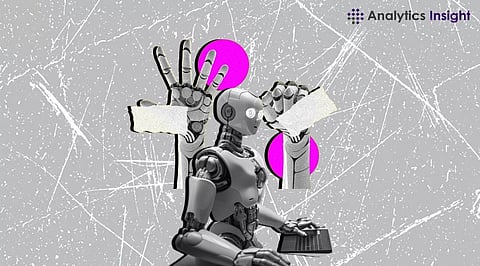

In the swiftly changing technological terrain, artificial intelligence (AI) has surfaced as a revolutionary influence, showcasing boundless possibilities. As data scientists and engineers strive to push boundaries in this field, building models from scratch offers an unparalleled opportunity to gain deep insights into the inner workings of AI systems while fostering creativity and innovation. This comprehensive guide will delve into the fundamentals of constructing AI models from their foundations, providing you with essential knowledge and practical steps to embark on your journey toward creating intelligent solutions.
To begin crafting AI models from scratch, you must possess a solid foundation in mathematics, statistics, programming languages such as Python or R, and machine learning concepts like supervised and unsupervised learning techniques. Familiarity with popular libraries like NumPy, Pandas, sci-kit-learn, TensorFlow, PyTorch, or Keras can also be beneficial when working through examples and implementing customized algorithms.
The first step in building AI models from scratch involves selecting an appropriate architecture based on the problem at hand. Some common architectures include decision trees, random forests, support vector machines (SVM), neural networks, convolutional neural networks (CNN), recurrent neural networks (RNN), long short-term memory (LSTM), and generative adversarial networks (GAN). Each model type excels in specific domains; therefore, understanding their strengths and weaknesses is crucial before proceeding further.
Data preprocessing plays a pivotal role in ensuring high-quality input for your AI models. Common tasks during this phase include cleaning, normalization, transformation, encoding categorical variables, handling missing values, and feature selection. These processes are vital because they directly impact the performance of your models by reducing noise, enhancing interpretability, and improving generalizability.
Feature engineering refers to the process of designing new features derived from existing ones to improve predictive power. For instance, if you have time series data, calculating moving averages or exponential smoothing could provide valuable insights. In image recognition problems, extracting relevant features using techniques like principal component analysis (PCA) or autoencoders might prove advantageous.
Once you have prepared your dataset, it's time to train your chosen model architecture. To ensure optimal results, employing effective training strategies is paramount. Cross-validation, hyperparameter tuning, early stopping, and regularization methods are some of the tools available to help optimize your model's performance. Additionally, incorporating transfer learning principles may expedite the training process and enhance the accuracy of your models.
After training your model, assess its performance using various evaluation metrics tailored to the nature of your task. Accuracy, precision, recall, f1 score, mean squared error (MSE), root mean square error (RMSE), area under curve (AUC), and confusion matrices are just a few options available to evaluate your model's effectiveness. By monitoring these metrics throughout the development cycle, you can make informed decisions about how to fine-tune your model and achieve better outcomes.
Upon achieving satisfactory performance levels, deploy your trained model into production environments where it can deliver value to end users. Depending upon your requirements, you may opt for cloud services, containerization, or standalone deployment. Regardless of the method employed, continuous monitoring of your deployed models is critical to detect any deviations from expected behavior and address them promptly.
Building AI models from scratch provides a unique opportunity to develop a deeper understanding of the underlying mechanisms driving AI applications. The ability to create bespoke models tailored to specific use cases allows data science teams to innovate and overcome challenges not addressed by off-the-shelf solutions. With patience, persistence, and a strong grasp of fundamental concepts, anyone can master the art of crafting AI models from the ground up.
Join our WhatsApp Channel to get the latest news, exclusives and videos on WhatsApp
_____________
Disclaimer: Analytics Insight does not provide financial advice or guidance. Also note that the cryptocurrencies mentioned/listed on the website could potentially be scams, i.e. designed to induce you to invest financial resources that may be lost forever and not be recoverable once investments are made. You are responsible for conducting your own research (DYOR) before making any investments. Read more here.
